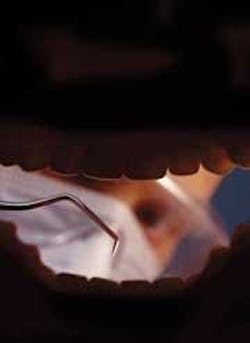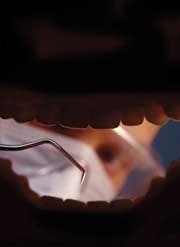Periodontal Profitability
by Roger Levin, DDS, MBA, FACD
Periodontal disease has been a factor in dentistry since the profession began. Fortunately, effective deterrents have evolved that successfully limit the advancement of this disease. Tremendous progress has occurred in identifying which microorganisms group into different categories and cause varying levels of damage. Virtually every dental school in the country teaches an extensive program in periodontics.
Patient attitudes about regular dental examinations have changed as well; most understand the importance of a complete examination and prophylaxis twice a year. Dental insurance covers most periodontal prevention, diagnosis, and treatment to some degree. Logic would dictate that, given these factors, periodontal disease should be declining rapidly. Regrettably, it is not. Periodontal disease is still an epidemic in the United States and worldwide.
Eight truths about periodontal disease
The following may begin to explain why periodontal disease is still so prevalent and how we can dramatically reduce it while increasing practice productivity and hygiene production.
• Periodontal disease is an epidemic. According to many studies, more than 60 percent of patients who visit a dental practice once a year have some level of periodontal disease. This is consistent with Levin Group studies, which found that over 70 percent of all dental practices do not perform full-mouth probing and recording regularly.
Periodontal disease is not as visually evident as many other dental problems. Therefore, the first step in the process must be a diagnosis that includes probing and recording.
• Periodontal disease is painless. Patients don't wake up in the morning in pain from periodontal disease. It does not prevent them from walking. It doesn't hinder their speech or give them headaches. It does not persist like back or knee pain. Periodontal disease is actually very comfortable. Most patients don't realize they have a problem and don't ask their dentist to diagnose or treat a periodontal concern.
From the practice prospective, most offices do not use probing and recording as an initial diagnostic tool. There is no incentive to proactively look for signs of periodontal disease.
• Periodontal treatment is expensive. Some patients decline treatment for periodontal disease due to the expense. However, most actually are more than willing to pay for periodontal treatment once they have been educated about the disease. It's incumbent upon doctors to explain to patients the enormous stake they have by investing in treatment. Once this is accomplished, most patients are eager to treat their condition and prevent further breakdown or tooth loss.
• Periodontal disease can't be self-diagnosed. There's no home-test kit for periodontal disease. If an over-the-counter oral rinse existed that turned blue to indicate periodontal disease, patients would race to dental offices and demand diagnosis and treatment. Unfortunately, many patients are incredulous to discover that they have periodontal disease when they have been visiting the dentist regularly.
These situationa require a clear explanation by the dentist or hygienist so that patients understand how fortunate they are that the disease has been diagnosed early, and that it should be treated to prevent further damage.
• The majority of dental offices do not diagnose periodontal disease. This is corroborated by many studies. Many clients enter their one-year consulting programs with no standard periodontal diagnosis or treatment programs. Once dentists understand that diagnosis involves a system that the hygienist must follow (including time and fee information), they find it easier to make the diagnosis. Learning how to manage periodontal treatment makes it highly productive for the practice.
Many of our clients report that once a full diagnostic program has been initiated, over 40 percent of their recall patients need some level of periodontal treatment and ongoing periodontal recall. The production increase to the practice from this activity alone can range from $50,000 to $100,000.
• It is difficult to tell long-term patients that they have periodontal disease. As a general dentist, I understand the challenge of educating long-term patients about their periodontal condition. Every practice should establish a policy that all patients will receive a complete diagnosis concerning gingival or periodontal problems. If a patient questions why the disease has appeared even after consistent, regular office visits, your answer may be, "Mrs. Jones, I am delighted that you have asked me that question. Today, we are very fortunate that we can diagnose periodontal disease as early as we have for you. New advances in periodontal treatment will give us a tremendous opportunity to help you keep your teeth for as long as possible."In this case, I am referring not only to standard scaling and root planing, but also to a new protocol that should be part of your practice and will be covered shortly.
• The hygienist needs to be the point person. One of the most important roles of the dental hygienist is to assist in the diagnosis of periodontal disease. Although dentists are required to make the final diagnosis, dental hygienists are extensively trained to evaluate the level of periodontal health of a patient. The diagnostic and treatment program should be built around the dental hygienist as much as possible and standard systems should be put in place to facilitate the process. Dental hygienists are supremely qualified to help create a system of standard diagnoses during recall appointments and for new patients, and, in most states, are legally allowed to initiate the majority of treatment.
• Periodontal treatment is painful. Every patient seems to know someone who has gone through periodontal surgery and heard about how painful it can be. What they did not hear about is how comfortable initial therapy can be, especially given new protocols. A great deal of periodontal disease can be treated today without surgery.
It is important to explain this fact to every patient and to emphasize that your office will do everything possible to minimize discomfort.
New model in periodontal productivity
A new model has arrived for treatment for periodontal disease. This model uses the standard approach to initial periodontal therapy, but includes a step for a locally administered antibiotic (LAA) that is based on the antibiotic Minocycline. The steps for the new periodontal protocol include:
• Data gathering by hygienist, including probing and recording
• Diagnosis and confirmation of periodontal disease by dentist
• Four quadrants of scaling and root planing with LAA therapy
• Re-evaluation
• Maintenance or referral to periodontist as necessary
It is important to note that the new component in this protocol for initial therapy is using an LAA.
One of the tetracycline-class LAAs is Arestin™ from OraPharma. Arestin is an FDA approved, locally administered antibiotic that has been tested in over 27 independent dental school studies. It has been proven to be more effective in pocket reduction than SRP alone.
LAA's enhance the effectiveness of initial therapy and add significant productivity to the dental practice.
LAA's and practice productivity
Locally administered antibiotics represent a new category of dental treatment and are rapidly becoming a mainstream part of initial therapy for periodontal patients. They enhance the effectiveness of scaling and root planing, and represent a classic example of a new product category that increases practice production and benefits patients.
LAA's dramatically increase production within the hygiene department. In an era where hygiene services are becoming increasingly costly to provide, LAA's add a significant production increase without adding any time during the initial periodontal therapy appointment. Keep in mind that most states allow hygienists to place an antibiotic into the periodontal pockets and that this can be easily incorporated into scaling and root planing appointments.
One of the keys to increased practice production and profit is to identify beneficial services that require little time but retain a significant profit margin per procedure.
Studies show that in a given practice, approximately 40 percent of patients in the hygiene department's recall program qualify for initial therapy due to the presence of some level of gingival or periodontal disease.
LAA and fees
Since Arestin can be quickly and easily administered, I currently recommend that the fee per site range from $16 to $20. However, many patients need numerous sites treated in a given quadrant. If over seven sites require treatment in a quadrant, I recommend a singular fee of approximately $150.00.
Keep in mind that while it may seem appealing to charge higher fees for this treatment, many patients will reject treatment if the fees are too high. As other variations emerge, the general costs will be reduced. This will allow dentists to treat more sites for more patients providing the highest possible level of care.
Locally administered antibiotics represent an outstanding new category for dentistry. The marriage of an excellent clinical product with practice productivity is greatly beneficial to both the practice and patients. It has been extensively studied and demonstrated to be effective in helping patients and improving the quality of your patients' lives.
Using locally administered antibiotics can greatly benefit your practice:• It is an extremely fast procedure to perform. Arestin is packaged in a unique delivery system that can be gently syringed into a periodontal pocket in just seconds.
• Arestin therapy is virtually painless. Placing an antibiotic in the pocket does not cause patient discomfort and does not require anesthetic.
• Nothing has to be removed at a later time. Arestin is resorbed over a period of 21 days, gradually releasing the antibiotic into the periodontal pocket, which promotes significant improvement in most cases when combined with scaling and root planing.
• LAA therapy is affordable. Whether it is a matter of one or two pockets or numerous pockets in a quadrant, this fast procedure has an extremely high level of patient case acceptance.
• Its efficacy and speed make Arestin extremely useful to the practice.

